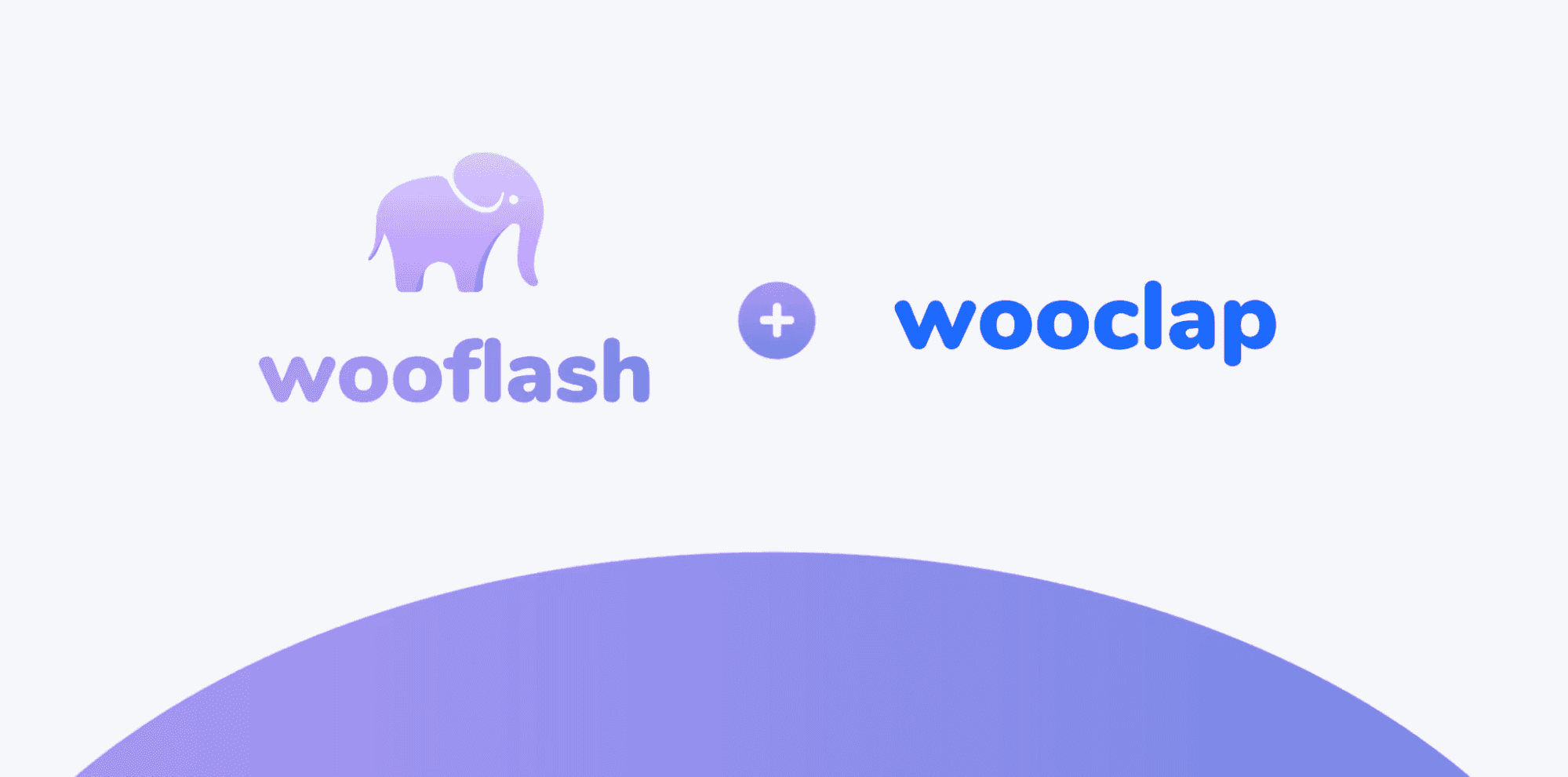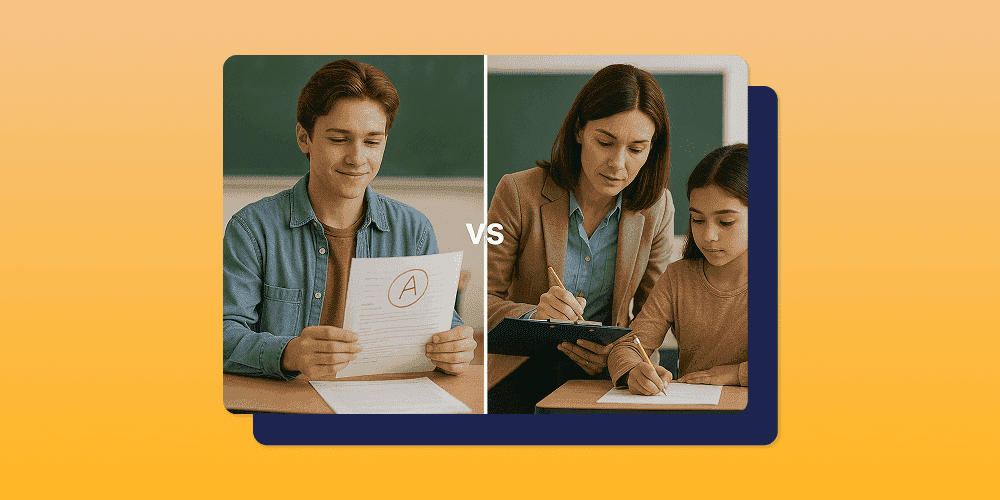
American summer tour! Wooclap will be at InstructureCon 2025
Come say hi at booth 41 from July 22nd to July 24th in Spokane, Washington
Wooclap asynchronously or Wooflash : Which tool should you use?
06.03.2024 • 4 minutes

Wooflash was born in 2020, a couple of years after Wooclap. Have you heard of these 2 platforms and do you know their uses?
Wooclap's primary objective is to boost interactivity in synchronous sessions. Wooflash complements Wooclap in that it is completely oriented towards asynchronous training. Wooclap does, however, include a "participant's pace" mode, enabling users to answer questions in their own time but its educational uses are different.
Which tool should be used for which objective? Let's take a look at 5 ways Wooflash can be used and 5 ways Wooclap can be used to align with your educational objectives.
Wooflash: Advantages
Wooflash is an intelligent, interactive and collaborative microlearning tool designed and optimized for asynchronous use, and is based on neuroeducational principles to enhance the learning experience.
Whether you want to collaborate on course content with your students or give them content to review on their own, Wooflash can help you! Wooflash’s features are adapted for asynchronous use giving your learners the option to answer questions as many times as they need.
5 uses of Wooflash
- Efficiently memorize a concept.

After class, create a Wooflash quiz and share it with your students. They can then revise it as many times as they need and at their own pace. Wooflash's spaced repetition algorithm customizes the frequency and order of questions to suit each student's individual needs.
When students revise with Wooflash, they will see the same concepts multiple times as they go through their revision, improving their long term memory of these concepts!
2. Engage your students in course creation.
Create a course on Wooflash, then invite your students to suggest questions they'd like to add to the course via the Wooflash "suggest a question" feature.
You can choose to edit the suggested questions and add them to your Wooflash course or delete them.
By being involved in creating their own content, students practice memory retrieval. This contributes to their learning even before answering Wooflash questions, as well as saving you time by allowing students to add questions and suggestions.
Find out how to collaborate with your students.
3. Give feedback

After class, ask your students to answer a questionnaire on Wooflash and they will get immediate feedback on their answers. Receiving immediate feedback is key to learning!
4. Track your students progress

Your students can review your Wooflash course over and over again. You can use the statistics available on Wooflash to track the individual progress of each learner. You can easily track the results of a large group of students, with the coloured grid that assigns each student a color based on their answer.
And just like that, you can identify where students are having problems comprehending a concept or identify individuals who may need more support.
Discover the different statistics available on Wooflash.
5. Give online exams
To save time, make a mock test or an exam from a Wooflash course that you have already created.
Use your Wooflash content to create a summary assessment for your students at the end of a class!
Watch our tutorial on how to create an exam on Wooflash.
Wooclap asynchronous mode: advantages
The event code and participation link are the same for “participant pace” mode and the classic Wooclap synchronous mode, so you can create an asynchronous questionnaire for participants to create before or after a live session with a single link and code.
Wooclaps asynchronous mode can be particularly useful for creating polls to get feedback from your audience.
5 uses of Wooclap asynchronous mode
- Evaluate a class

Create a class evaluation questionnaire and share it with participants after class and they can respond asynchronously.
To create your questionnaire, make a copy of this Wooclap template
2. Enhance participation in your class
With “participation pace” mode, each participant can take the time they need to think and research. They can answer the “participant pace” questionnaire with the same Wooclap link that you shared with them before.
During the synchronous session, participants will still be able to add their ideas and view them on screen.
3. Prepare a class with students needs in mind
Create a questionnaire before class to ask students their opinions or ideas on a certain topic. You can use their questions to guide how you’ll prepare your class and how you’ll teach it.

4. Better prepare for your class by evaluating students understanding
Create an evaluation questionnaire and share it with your students before class. They can answer the questionnaire and you can prepare your class to correspond with the students' level of understanding.
You could share the same link during or after class to gain an understanding of students' comprehension of the topic and to enhance engagement.
Checkout this Wooclap template that evaluates students' understanding.
5. Prepare a debate
You can ask students to answer questions on Wooclap individually or in groups in class. Students can answer the questions at their own pace, taking the time they need to think and reflect on their answers.
Then, you can share the results with the whole class.
Copy this template to use this activity in your class.
In conclusion, Wooflash is a platform designed for asynchronous learning. Wooflash is primarily used for collaborative activities but also to track the progress of students, as they can answer course questions as many times as they like.
As for Wooclap, its main asynchronous use is to quickly survey your audience before or after a live session using the same code or connection link as during the session.
Don’t delay, discover Wooflash today!
Writer

The Wooclap team
Make learning awesome & effective
Subject
A monthly summary of our product updates and our latest published content, directly in your inbox.



